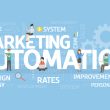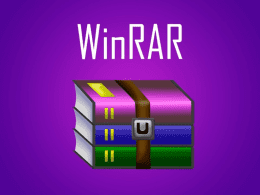Introduction
In the competitive world of architecture and design, reaching the right professionals can make or break your marketing efforts. An architects email list is a powerful tool that lets you connect directly with top architects, interior designers, and urban planners. Whether you’re promoting innovative building materials, advanced design software, or professional events, a well‐curated email list for architects ensures your message lands in front of decision-makers. In this guide, we’ll explore why an architects mailing list is essential, how to build and maintain one, best practices for crafting engaging campaigns, and strategies to measure success. Let’s dive into the world of targeted email marketing and learn how to reach top design professionals effectively.
Why You Need an Architects Email List
1. High-Value Leads
Architects influence large-scale projects and procurement decisions. By targeting their inboxes, you engage professionals with significant budgets and long-term needs, driving higher‐value sales.
2. Direct Communication
Emails go straight to inboxes, avoiding social media algorithms and ad blockers. Personalized messages stand out and foster direct, one-on-one engagement.
3. Cost-Effective Marketing
Compared to print ads or trade shows, email campaigns cost less per lead. You can send thousands of emails at a fraction of the cost, with measurable ROI.
4. Segmentation and Personalization
Architects email lists can be segmented by specialty—residential, commercial, sustainable design—or by firm size and location, allowing highly relevant content that boosts open and click rates.
5. Nurturing Long-Term Relationships
Architecture projects often span months or years. Regular email touchpoints—newsletters, case studies, updates—keep your brand top of mind throughout the project lifecycle.
Building Your Architects Mailing List
1. Define Your Target Audience
- Specialty: Commercial architects vs. residential architects.
- Seniority: Principals, project managers, or junior designers.
- Location: Local, national, or international firms.
A clear profile helps refine your data sources and messaging.
2. Use Multiple Data Sources
- Industry Directories: Royal Architectural Institute of Canada (RAIC), American Institute of Architects (AIA), RIBA in the UK.
- Trade Shows & Conferences: A’ Design Awards, NeoCon, SDI (Singapore). Collect business cards or scan badges.
- Online Platforms: LinkedIn Sales Navigator to identify and export architect contacts.
- Website Sign-Ups: Offer whitepapers on sustainable materials or design trends in exchange for email registration.
- Webinars & Virtual Events: Require attendees to register with their firm email.
3. Ensure Data Quality
- Validation Tools: Use services like NeverBounce or ZeroBounce to verify email accuracy and reduce bounce rates.
- Regular Audits: Clean your list quarterly to remove unsubscribes, duplicates, and invalid addresses.
- Compliance Checks: Ensure opt-in records are stored, and your practices follow CAN-SPAM, CASL, or GDPR rules.
Segmentation Strategies for Architects
1. By Project Type
- Residential vs. Commercial: Tailor messaging to home builders or corporate developers.
- Public Infrastructure vs. Private Sector: Focus on government tenders or private investors.
2. By Firm Size
- Boutique Firms: Highlight bespoke solutions and personalized support.
- Large Firms: Emphasize scalability, integration, and global standards.
3. By Geographic Region
- Local Code Updates: Inform local architects about regulation changes.
- Climate-Specific Materials: Pitch materials suited to tropical, temperate, or arid regions.
4. By Engagement Level
- New Subscribers: Send welcome series introducing your brand and services.
- Active Leads: Offer advanced content—case studies, technical whitepapers.
- Dormant Contacts: Re-engagement emails with exclusive offers or survey invitations.
Crafting Engaging Email Campaigns
1. Attention-Grabbing Subject Lines
- Examples:
- “Innovative Facade Materials for Your Next Project”
- “Webinar: Sustainable Design Trends in 2025”
Keep under 60 characters and include keywords like “architects” or “design professionals.”
2. Value-First Content
- Case Studies: Showcase successful projects using your products.
- Industry Insights: Share research on smart buildings, LEED certification, or BIM workflows.
- Product Demos: Invite them to virtual tours or video demos of your software or materials.
3. Clear Calls-to-Action
- Download: “Download the Free Facade Design Guide”
- Register: “Save Your Seat for Our Live Webinar”
- Schedule: “Book a Free Consultation with Our Design Expert”
Place CTAs prominently, with contrasting buttons and concise text.
4. Visual Appeal
Use high-resolution images of architectural projects and clean layouts. Incorporate your brand colors and logo for consistency.
5. Mobile Optimization
Over 50% of emails open on mobile. Use responsive templates, larger fonts, and single-column designs for easy reading on any device.
Advanced Segmentation and Automation
1. Triggered Emails
- Download Follow-Up: Send related resources after a guide download.
- Event Reminders: Automated reminders 24 hours and 1 hour before webinars or demos.
- Milestone Celebrations: Email on the anniversary of a client’s project completion or signup date.
2. Drip Campaigns
Set up multi-stage campaigns that educate architects on your offerings over weeks, nurturing them from awareness to decision.
3. Dynamic Content
Personalize emails by inserting variables like {FirstName}, {FirmName}, and tailoring sections of the email based on segmentation data.
Measuring Success and Optimization
1. Key Metrics
- Open Rate: Industry benchmark for B2B is 20-25%; aim higher with personalization.
- Click-Through Rate (CTR): Target 2-5%; measure engagement with links and CTAs.
- Conversion Rate: Percentage of recipients taking the desired action (download, register).
- Bounce Rate: Keep under 2%; high bounces hurt deliverability.
- Unsubscribe Rate: Below 0.5% indicates relevant content.
2. A/B Testing
- Subject Lines: Test personalization vs. urgency.
- Send Times: Compare morning vs. afternoon sends.
- Email Layouts: Single-column vs. multi-column designs.
Analyze results and apply learnings to future campaigns.
3. List Growth Rate
Track net new subscribers vs. unsubscribes and bounces to ensure a healthy, growing audience.
Compliance and Best Practices
1. Obtain Explicit Consent
Use double opt-in where possible. Provide clear unsubscribe links in every email.
2. Maintain a Preference Center
Allow recipients to control the type and frequency of emails they receive—jobs, events, product updates.
3. Respect Privacy Regulations
- CAN-SPAM (US): Include physical address and opt-out instructions.
- CASL (Canada): Obtain express or implied consent before sending commercial emails.
- GDPR (EU): Provide data access and deletion options for EU residents.
Following these rules prevents fines and builds trust with your architect audience.
Integrating Email with Other Channels
1. Social Media Promotion
- Share excerpts of email content on LinkedIn or Instagram and link back to subscribe.
2. Website Pop-Ups and Forms
- Add a simple subscribe form on high-traffic pages like blog or resource library.
3. Webinars and Virtual Events
- Promote email sign-ups during live events in exchange for exclusive materials or Q&A access.
4. Trade Shows and Conferences
Collect business cards or badge scans with permission, then follow up via email with tailored messages.
Integration ensures consistent messaging and multiple touchpoints for maximum impact.
Conclusion
An architects email list is an indispensable asset for companies seeking to reach top design professionals. By defining your audience, building a high-quality list, and segmenting contacts by specialty and engagement level, you can deliver highly relevant content that drives clicks and conversions. Craft compelling, mobile-friendly emails with clear CTAs, leverage automation for timely follow-ups, and measure key metrics to optimize performance. Finally, always adhere to compliance rules and integrate email campaigns with social media, webinars, and events for multi-channel impact. With these best practices, your architects mailing list will become a powerful channel for engagement, lead generation, and long-term relationships in the architectural community.












